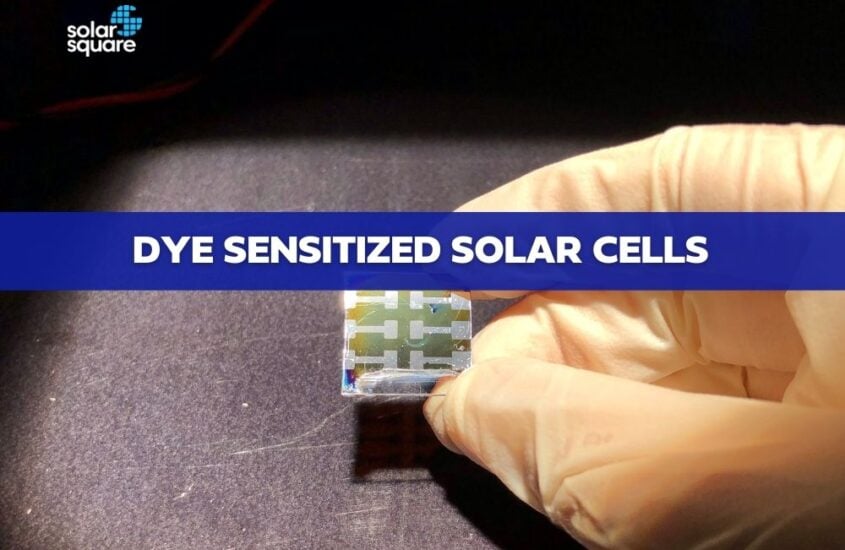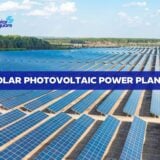Dye Sensitized Solar Cells: Advantages, Disadvantages, And More

A dye sensitized solar cell is the third generation of solar cells. It belongs to the thin-film solar cell category.
This advanced solar cell transforms visible light into electrical energy. The dye within the solar cell generates electricity while in contact with sunlight.
These solar cells are among the cheapest solar cells available on the market. They were invented by Dr. Brian Regan and Professor Michael Graetzel in 1991.
They are an excellent alternative to silicon solar cells due to their low fabrication cost and simple configuration.
This technology:
- – Extracts energy from both artificial and natural light.
- – Converts that energy into electric power.
- – Use the generated power for charging electronic devices and other indoor and outdoor purposes.
How Are Dye Sensitized Solar Cells Constructed?
These cells comprise a coated layer of titanium dioxide nanoparticles made from mesoporous oxide electrodes.
This layer is covered with a light-sensitive dye that extracts energy from the sun’s rays. The solar cells are made of titanium dioxide as they can resist electron transfer better than any other material.
Although they can only absorb limited photons from the solar rays, this limitation can be curbed by the molecular sensitizers of the dye molecule.
These solar cells are placed on a semiconductor’s surface to absorb more photons from the sunlight. Finally, the titanium dioxide is immersed in an electrolyte solution and placed above a platinum-based catalyst.
Working Principles Of A Dye Sensitized Solar Cell
These solar cells functions in four electrochemical processes –
- – Step 1 – Light absorption: When light falls on these cells, the electrons within the cell get charged up from the ground state to a high-energy state.
- – Step 2 – Electron injection: The molecules pass the band gap of the conductor and get oxidised. Then, the electron enters the semiconductor’s conduction band and gets transported to the anode’s current collector.
- – Step 3 – Transportation of carrier: By receiving an electron transfer from the iodide in the electrolyte, the oxidised dye molecule (S+) is restored.
- – Step 4 – Collection of current: Iodide is created again by reducing triiodide on the cathode.
Advantages of A Dye Sensitized Solar Cell
There are many benefits of using a dye sensitized solar cell.
These cells are commonly used in portable gadgets and low-density applications. Here are some of the advantages of using these cells –
- – Since it has a strategic structure, it can extract more protons from the sun’s rays.
- – It has a low production cost. Cheap materials are used to manufacture this solar cell.
- – It does not require any apparatus and is more economical than semiconductor cells.
- – This generation of solar cells is capable of absorbing fluorescent light and diffused sunlight.
- – It can work effectively in cloudy climatic conditions.
- – It has a good shelf life.
- – It does not degrade under sunlight.
- – Frequent replacements are not needed.
- – It is easy to use, clean, and maintain.
- – Special protection is not necessary for longevity and better functionality.
- – These solar cells are composed of lightweight and durable materials.
- – It has high mechanical strength.
- – This generation of solar cells can work at wider angles.
Disadvantages Of A Dye Sensitized Solar Cell
Like other solar cells, these cells have some disadvantages which are as follows –
- – Since liquid electrolytes are used in its composition, it is sensitive to high and low temperatures. Therefore, it has a limited endurance to operating temperature.
- – The electrolyte consists of volatile organic solvents. Thus, it must be sealed with caution. Due to its volatile nature, the dye sensitized solar cell must be installed with precaution.
- – It has less efficiency than other solar cells.
- – This generation of solar cells is not ideal for large-scale applications as more efficient solar panels are required for large-scale deployments.
- – It does not serve commercial purposes.
The Current Status And Measures To Increase The Efficiency Of A Dye Sensitized Solar Cell
The existing efficiency of dye sensitized cells is about 12%. This percentage is less than the first and second generations of solar cells.
The other thin-film solar cells offer 20-30% efficiency. The researchers are consistently working to increase the efficiency of a dye sensitized cell.
The following are the few measures by which the manufacturers can improve the efficiency of dye sensitized cells:
- – If the dye molecules are altered, they can extend the range of light that can be absorbed.
- – The manufacturers can enhance light absorption by infusing more dye molecules into titanium dioxide.
- – Increasing the aperture ratio is another effective way to improve the solar cell’s efficiency.
- – By modifying the electrolyte and electrode structure, internal resistance can be improved.
Conclusion
Although a dye sensitized cell is yet to match the efficiency of traditional solar cells, it is still the future of the solar industry.
Due to their low-cost and ease of fabrication, dye sensitized cells are expected to be in demand in the market.
If solutions for reducing the drawbacks of dye sensitized cells are discovered, they can become more efficient with time. They might even surpass the efficiency of traditional solar cells in the upcoming years.
FAQs
Q1. What are the two limitations of Dye sensitized solar cells?
The major limitations of dye sensitized cells are as follows:
- The electrolyte can freeze at low temperatures.
- The liquid within the electrolyte can expand at high temperatures, making it difficult to seal the panel.
Q2. Why is TiO2 used in dye sensitized cells?
TiO2 is widely used in these cells due to its ease of synthesis and economical pricing.
Q3. Why are dye sensitized cells more important than silicon solar cells?
Although silicon solar cells are more efficient than dye sensitized solar cells, the former is essential as it can generate electricity in low light conditions.
These solar cells can produce electricity even in indoor lights. Furthermore, these solar cells have a simple design and come at economical pricing.













